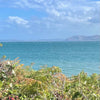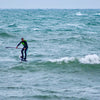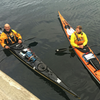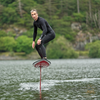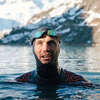Chilly Swimming - Make the most of your Winter dips.
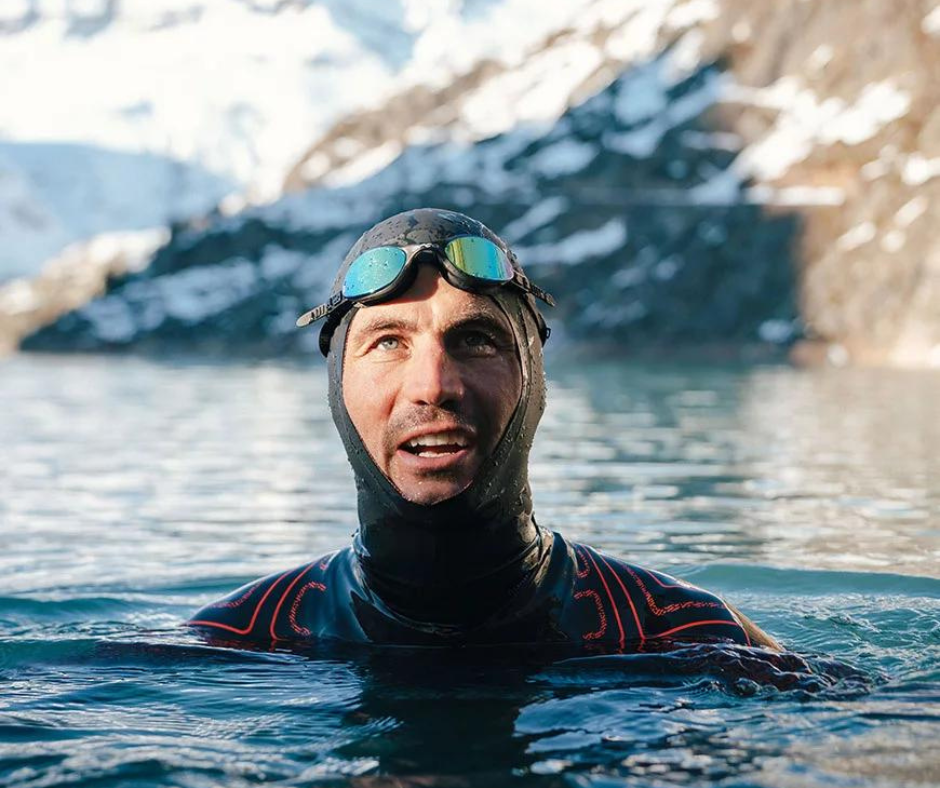
As winter creeps in, for many folks, the draw of open water swimming doesn't wane; it intensifies. For those seeking a refreshing challenge, Llyn Padarn in Llanberis, with water temperatures plummeting to a chilly 2.5 degrees Celsius, becomes a playground for any avid open water and wild swimmer. Here's your guide to making the most of open water swimming training throughout the winter months in this breathtaking location.

It's All About Timing:
Timing is everything when it comes to open water swimming in winter. Aim for mid-morning when the sun is at its peak, providing a bit of warmth to counterbalance the frigid waters. It gets darker in the morning and evening, so our window is small anyway. Luckily, on Llyn Padarn, we don't have any tide to worry about. If you live in a tidal area, try to sync your sessions with a slack tide to minimise unpredictable currents. Two things that can be challenging on Padarn are strong winds, which create chop and glare from the sun. A quick check on our webcam can tell you how choppy it is on the lake, and some tinted goggles can help with the glare.

Structuring Your Session:
- The warmup is Non-Negotiable: Before diving into the icy embrace of Llyn Padarn, a thorough warmup is crucial. Engage in dynamic stretches, light jogging, and arm rotations to prepare your muscles for the impending cold shock. An in-water warmup is challenging at this time of year because the clock starts ticking as soon as we enter the water. Begin an interval session with one or two lower-paced efforts and use that as your warmup.
- Progressive Exposure: Begin with shorter sessions and gradually increase the duration as your body acclimatises. Overexertion in the icy water can lead to fatigue and increase the risk of hypothermia.
- Interval Training: Break down your swim into intervals. Sprinting for short bursts followed by slower active recovery swims enhances cardiovascular fitness and generates internal heat, not to mention keeps us moving, which is vital.
- Cold Water Adaptation: Embrace the cold. Spend a few minutes acclimatising to the water before starting your swim. This gradual exposure allows your body to adjust, reducing the initial shock. This biggest hack is getting your face in the water as early as possible. There is a horrible headache stage that usually passes within a few minutes of swimming. Some people are happy with 10 minutes, and others push to 40; it doesn't sound like much, but in the depth of winter, this is probably the most extended session you would get away with.
- Post-Swim Plan: This is vital. Have a plan in place for when you get out of the water. Have your clothes turned the correct way out, placed in order of when they go on. It's no use having your pants at the bottom of the pile. Bring a little mat to stand on whilst changing and have some form of warm drink ready to have post-swim.

Dressing for Success:
- Thermal Wetsuit: A high-quality thermal wetsuit is your best friend in winter. Opt for one with extra insulation to combat the biting cold of Llyn Padarn. Pair this with a good-quality neoprene vest, and you will be on the right track. Tip: Don't break the vest out too early in the season!
- Neoprene Gloves and Swim Socks: Protect your extremities from the numbing cold with neoprene gloves and swim socks. They can dramatically improve your perceived comfort in the water, which is very important.
- Swim Cap and Goggles: A durable swim cap and goggles are essential, shielding your head and eyes from the elements. Choose ones specifically designed for open water to maintain visibility and reduce heat loss. The swim cap will help prevent the dreaded 'ice cream headache' that we mentioned earlier. When it comes to goggles, we suggest a "Mask" style. A mask is very stable on the face and is easier to adjust/de-fog in rougher water with cold hands.
Pool Training to Complement:
While Llyn Padarn offers a unique and challenging environment, complementing your open water sessions with pool training is essential. Pool training allows us to do longer sessions, be more exact with distances and pacing, and implement more prolonged warmups.
- High-Intensity Intervals: Open water swims differ for everyone; some like it low and slow, while others enjoy a bit more pace. Both groups will benefit from high-intensity interval training (HIIT) in the pool. Alternate between sprints and active recovery periods.
- Technique Refinement: Use the controlled environment of the pool to focus on refining your swimming technique. Work on elements like stroke mechanics, breathing, and body positioning.
- Endurance Building: Extend your pool sessions to enhance overall endurance. Consistent and gradual increases in distance will prepare you for the longer swims in Llyn Padarn, which will probably happen in the summer.
Safety First:
No matter how experienced you are, winter open water swimming demands respect. Always swim with a buddy (if not, definitely wear a swim buoy), inform someone of your plans, and wear a brightly coloured swim cap for visibility.
In the heart of winter, Llyn Padarn transforms into a serene yet challenging arena for open water enthusiasts. Embrace the cold, stay safe, and let the icy waters sculpt you into a resilient and accomplished winter swimmer. Dive in and make every stroke count amidst the stunning landscapes of Llanberis.


